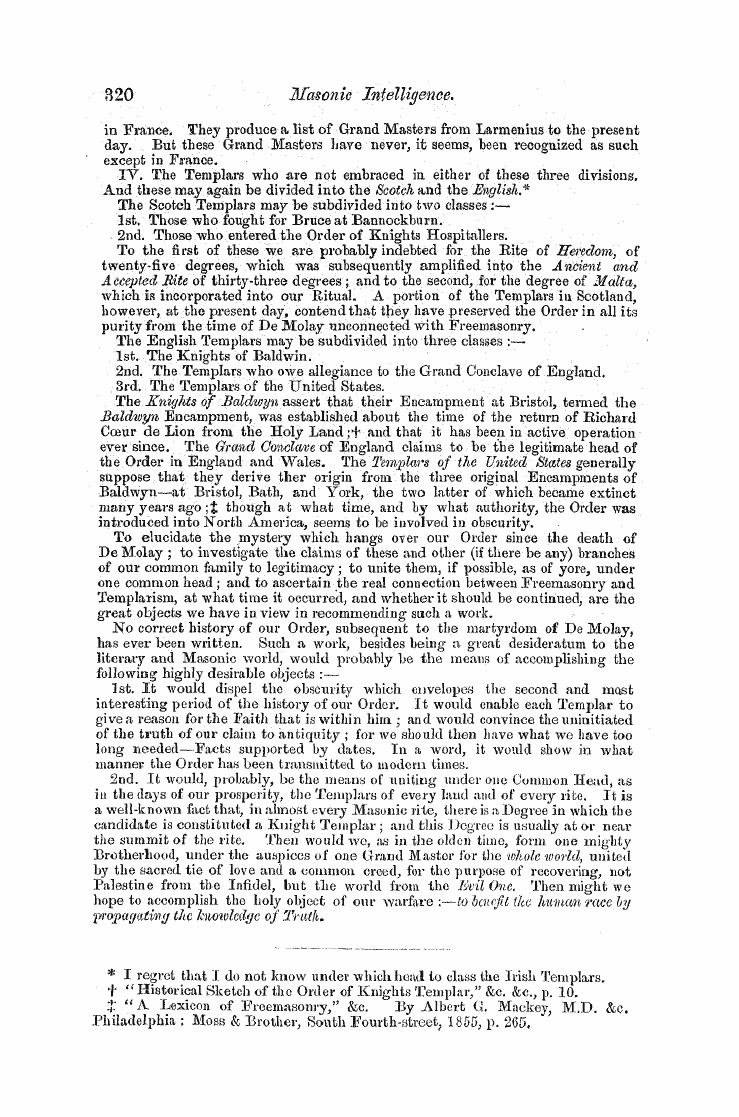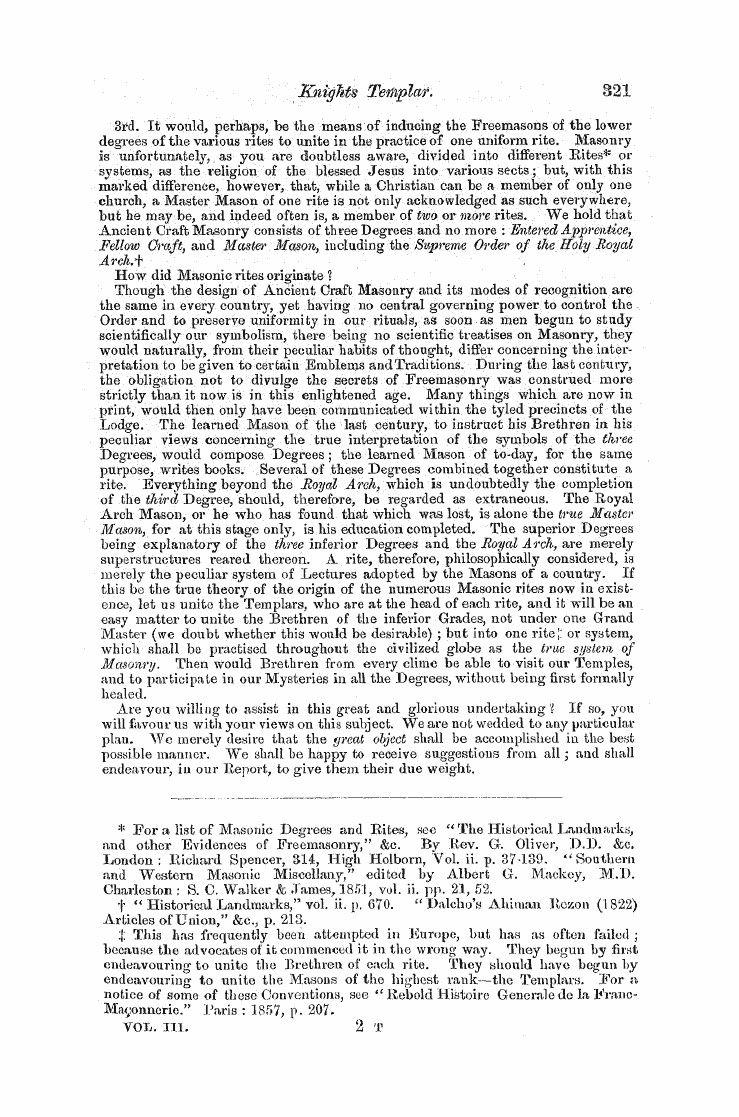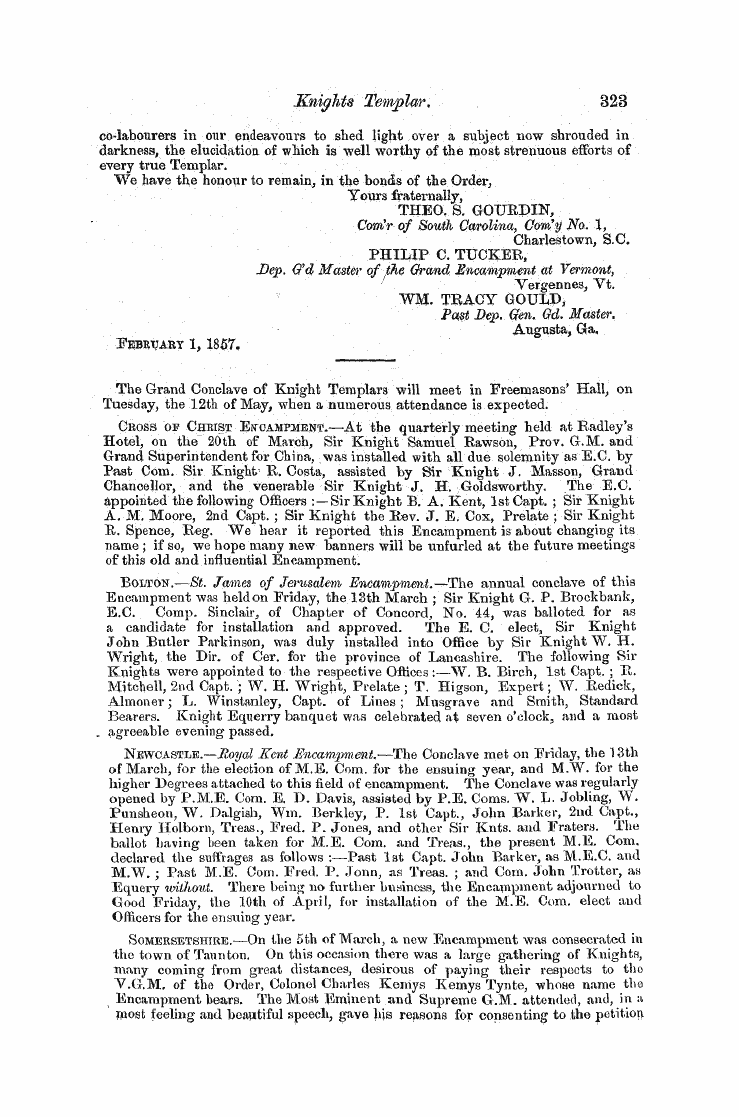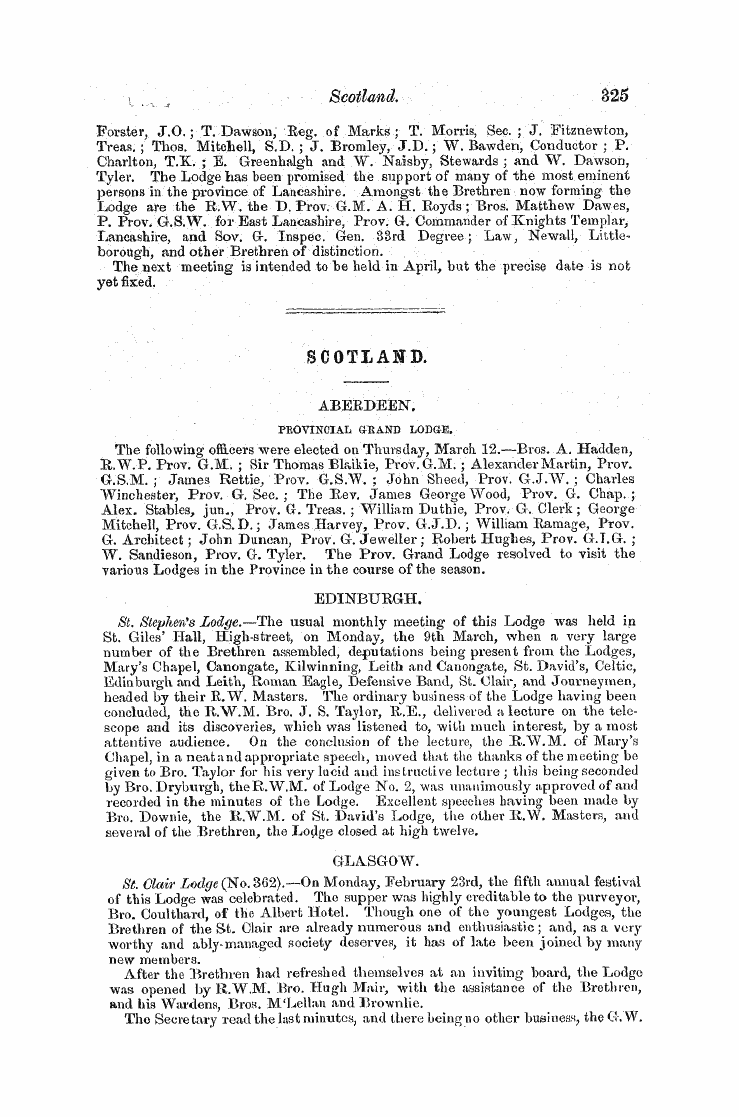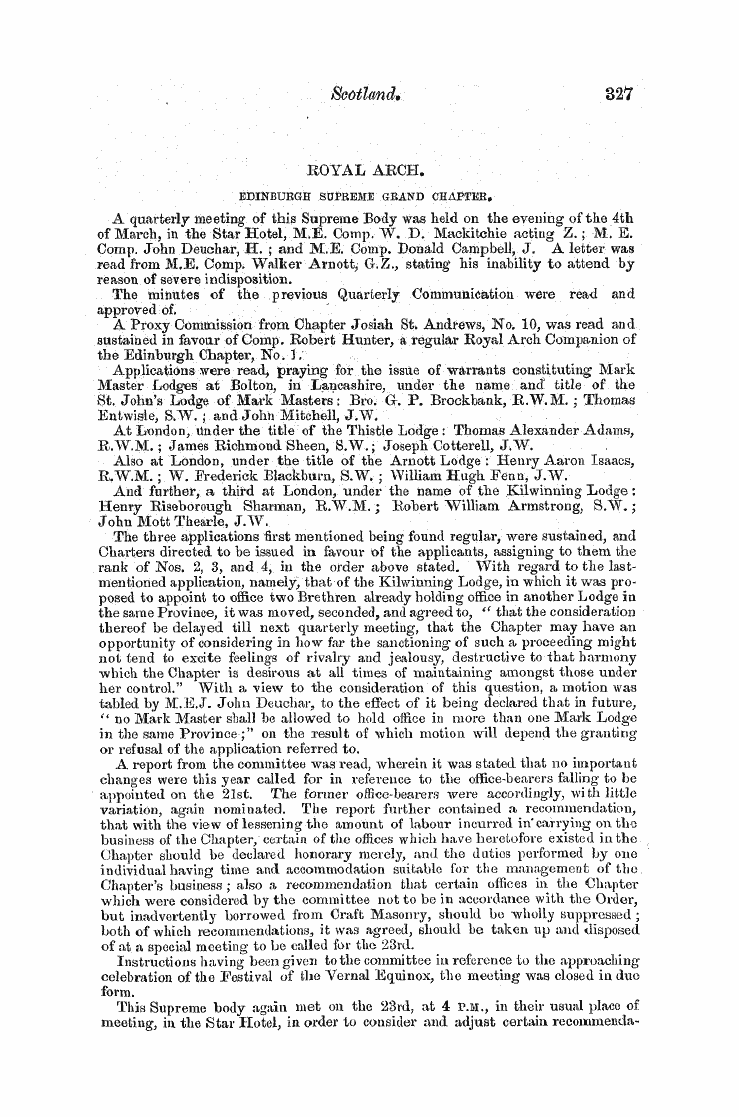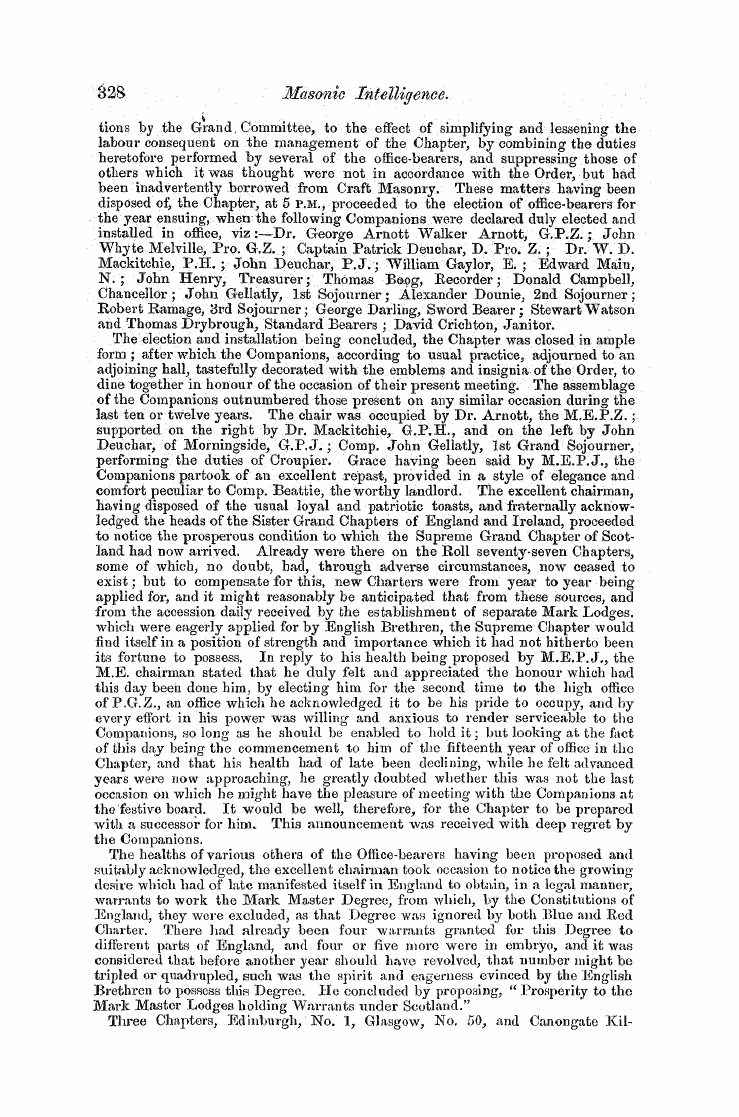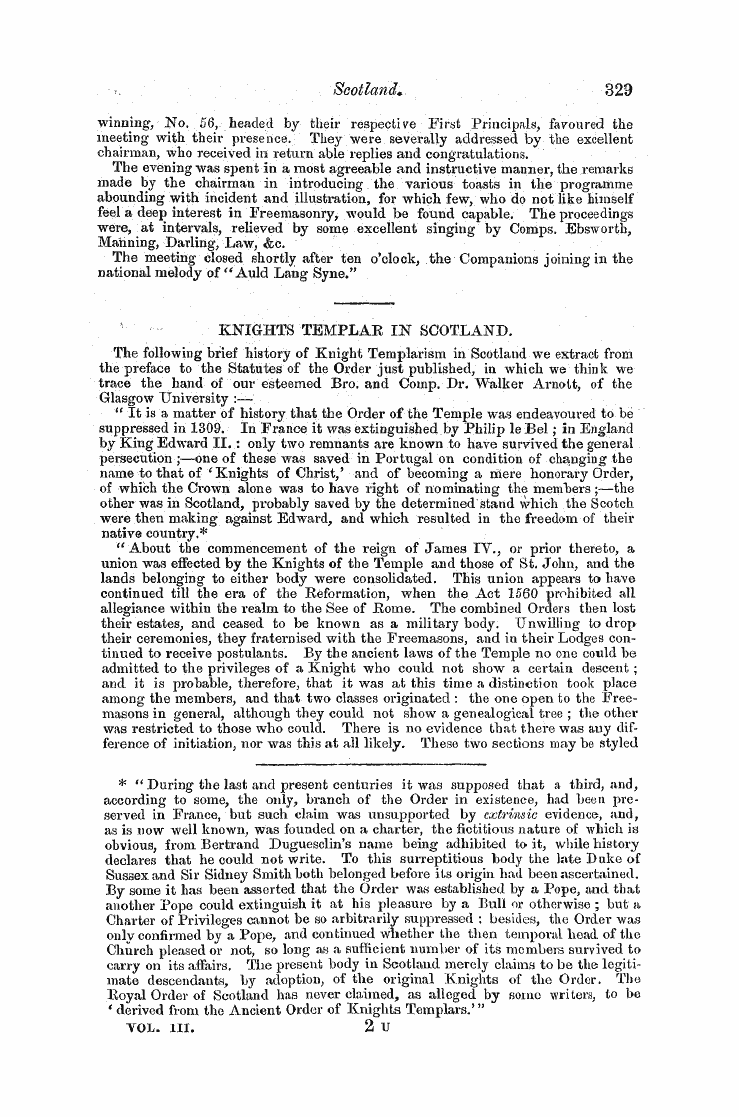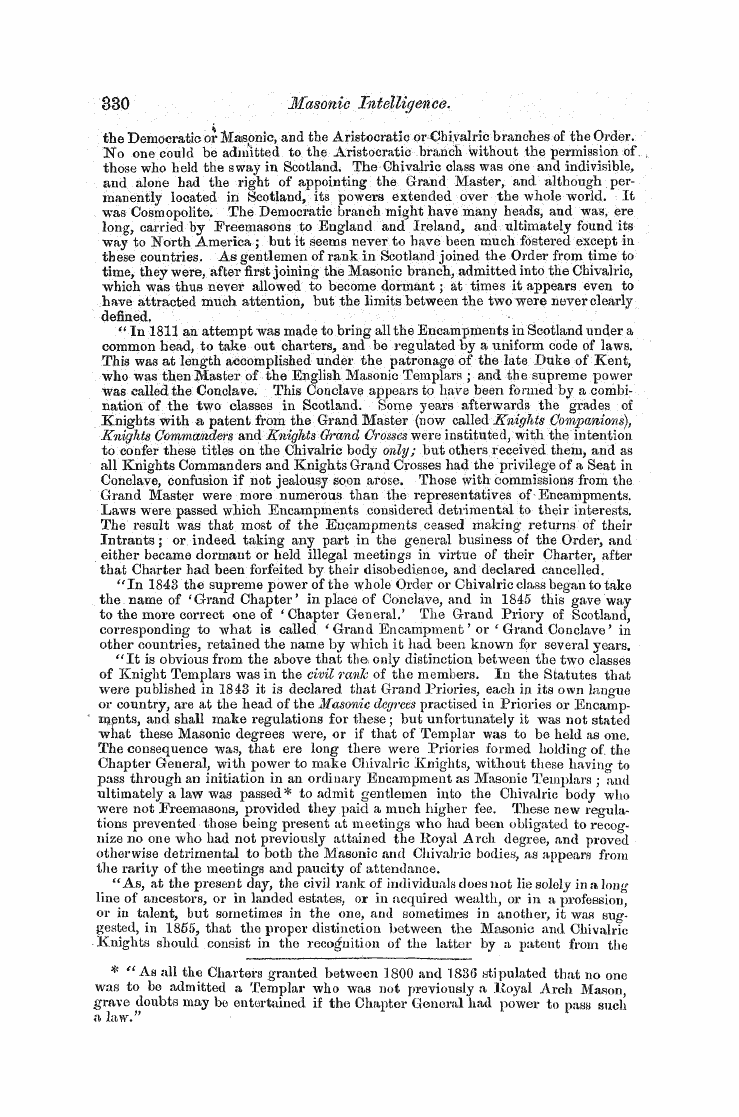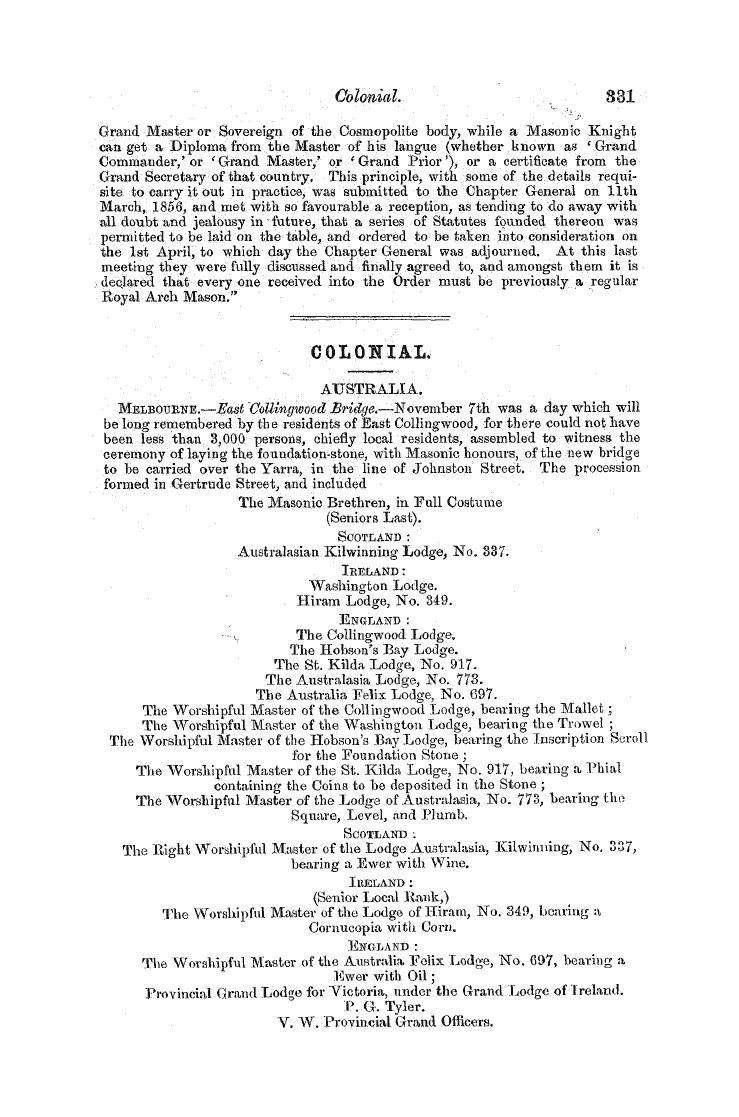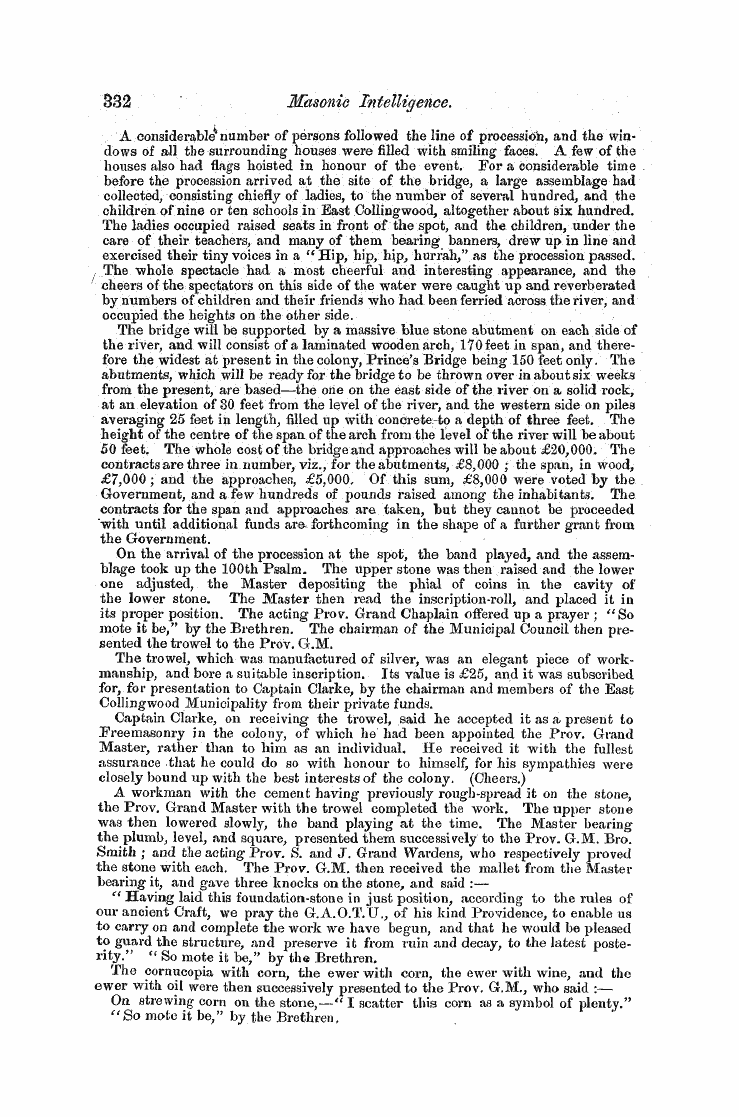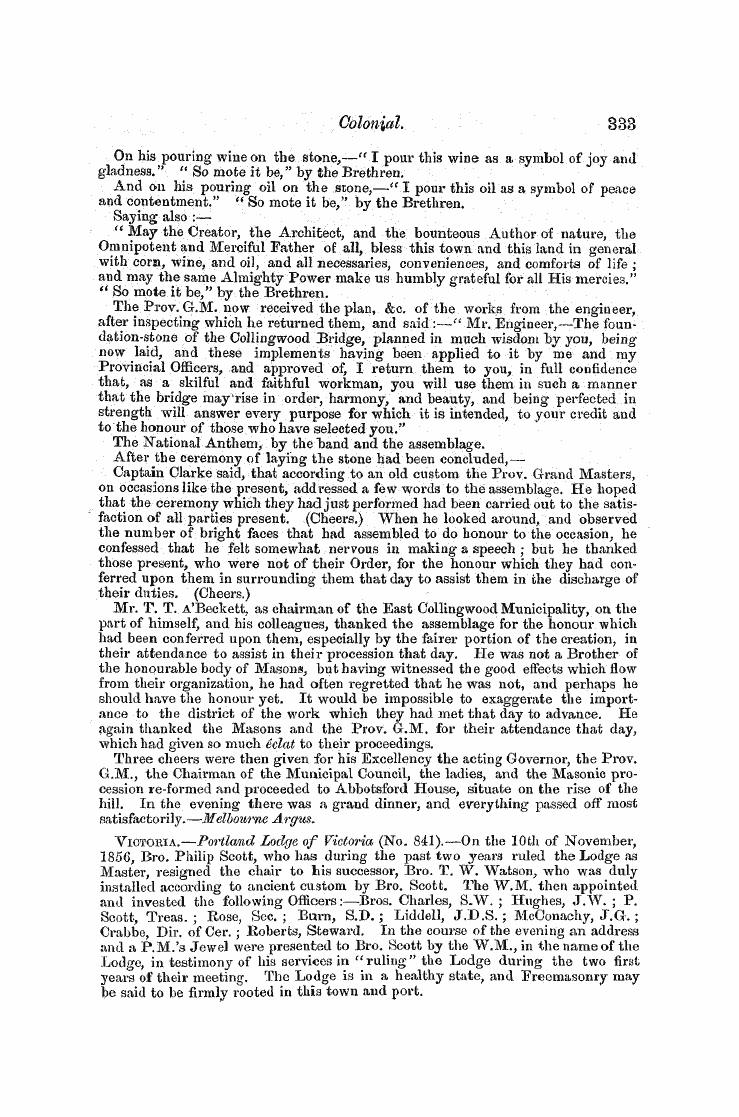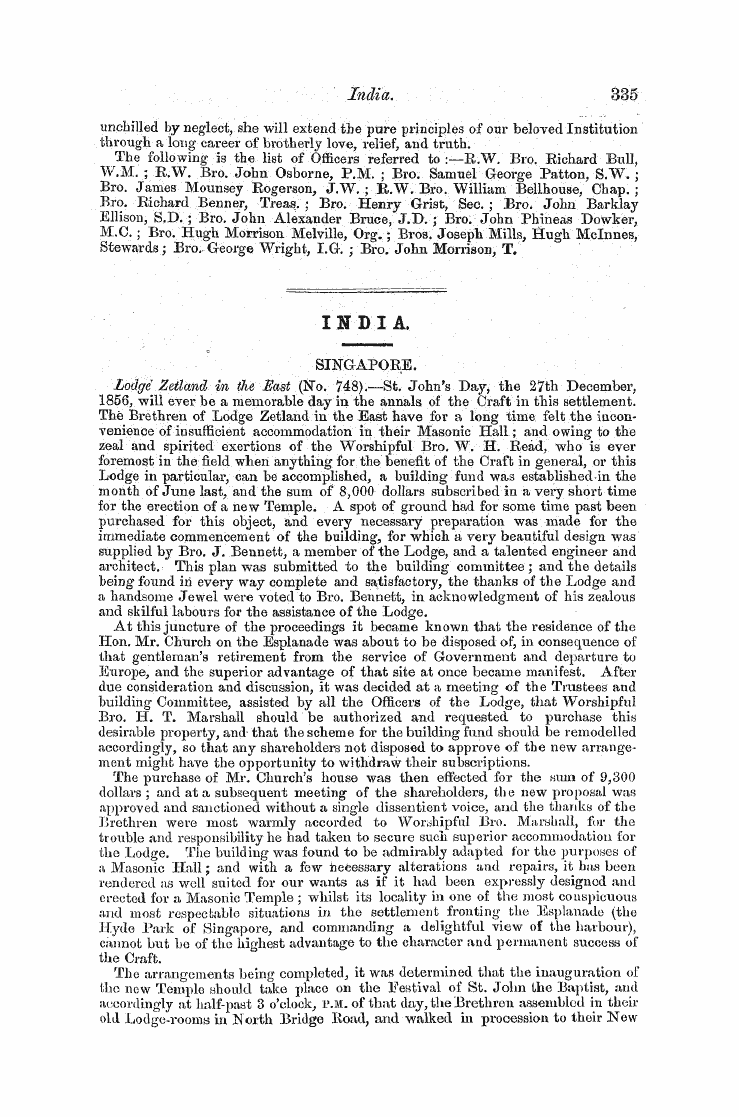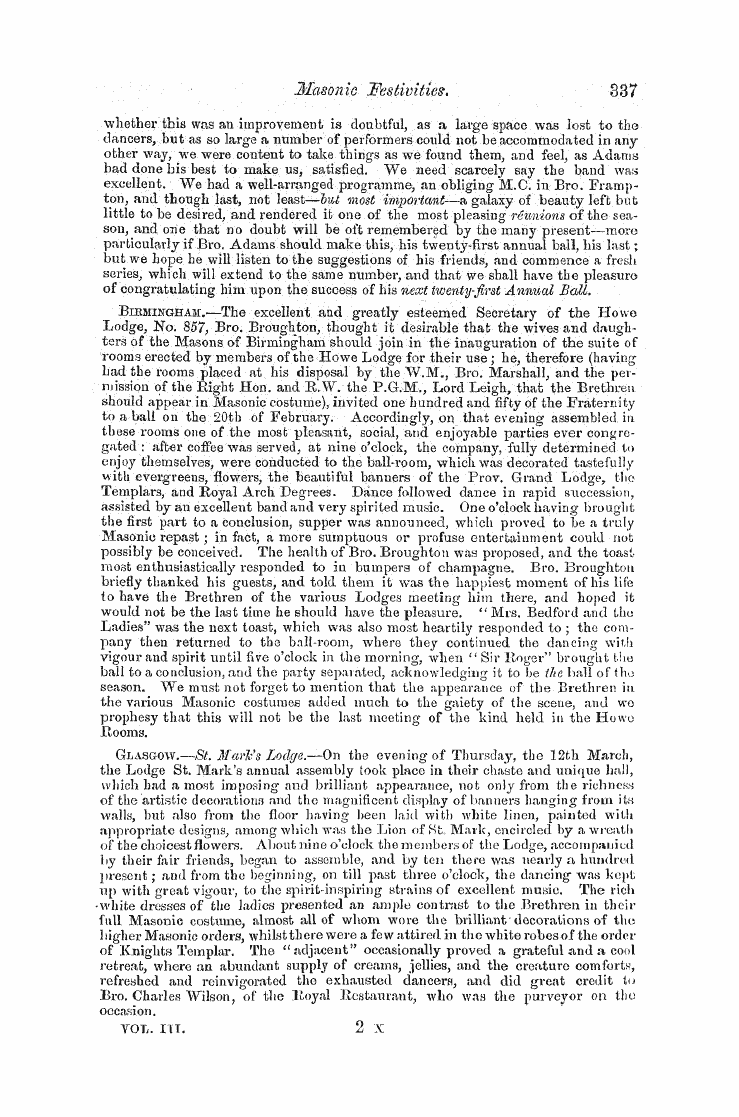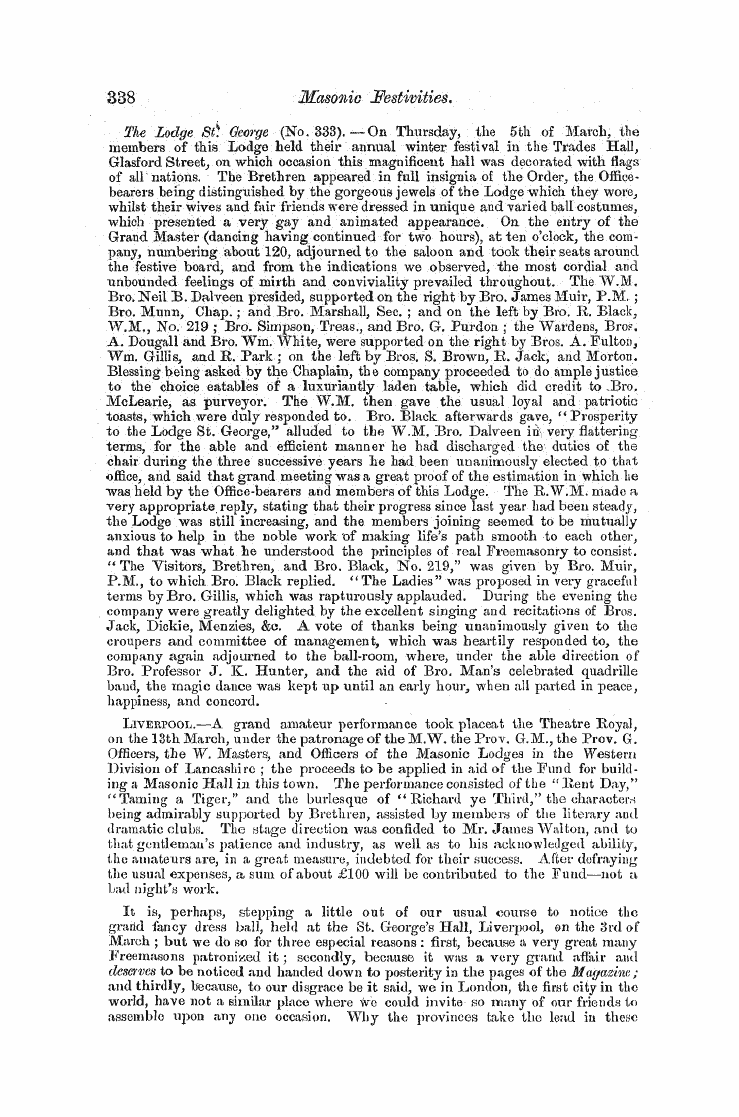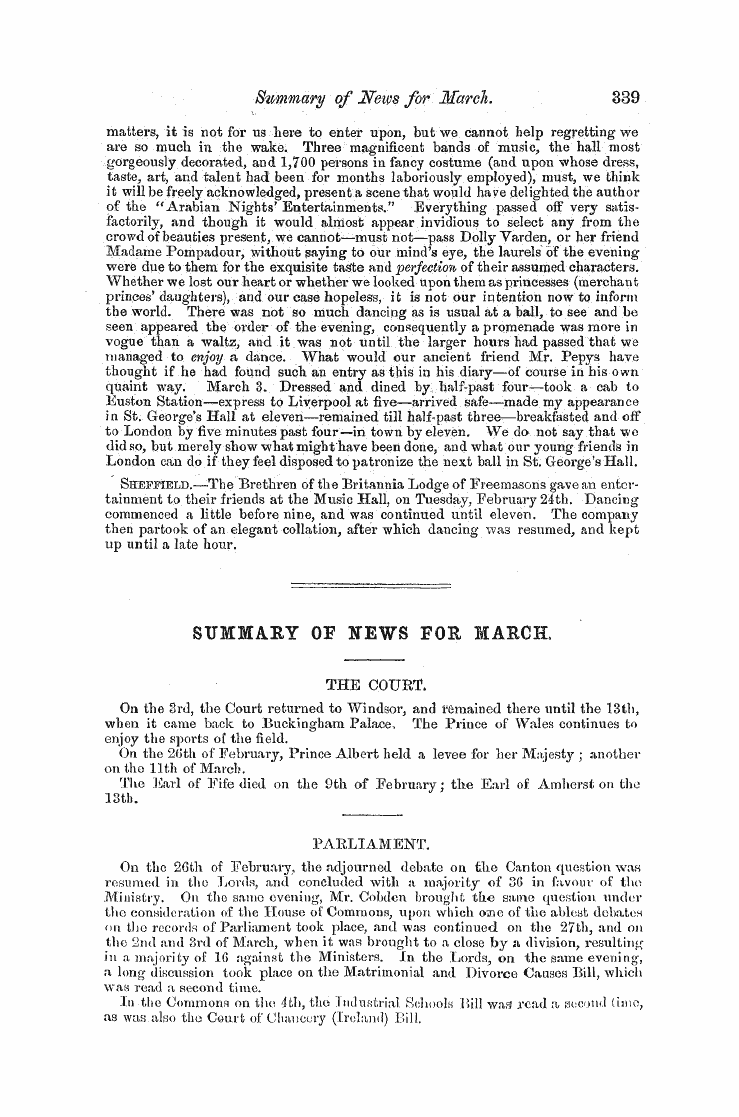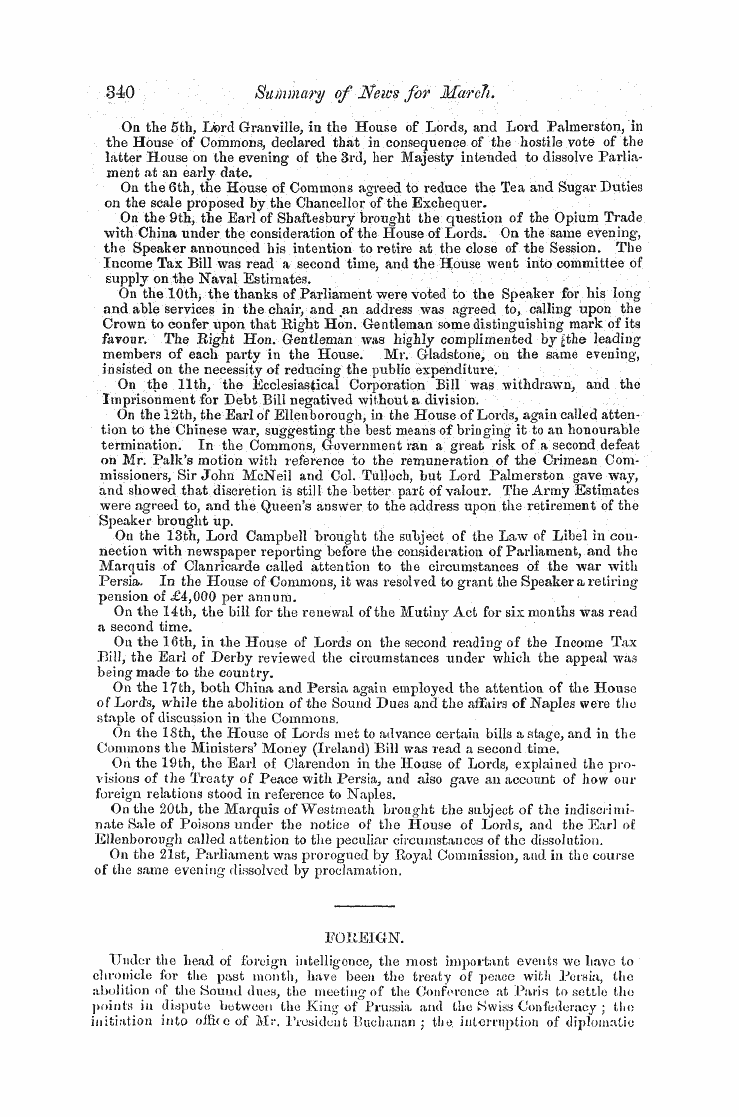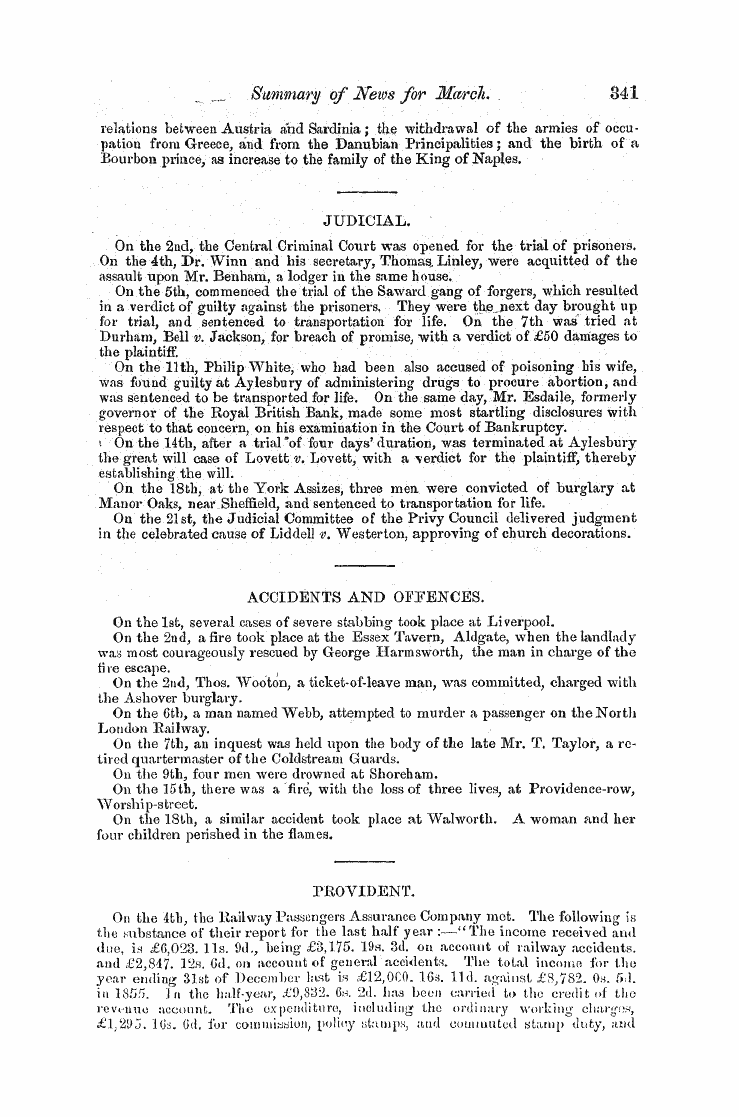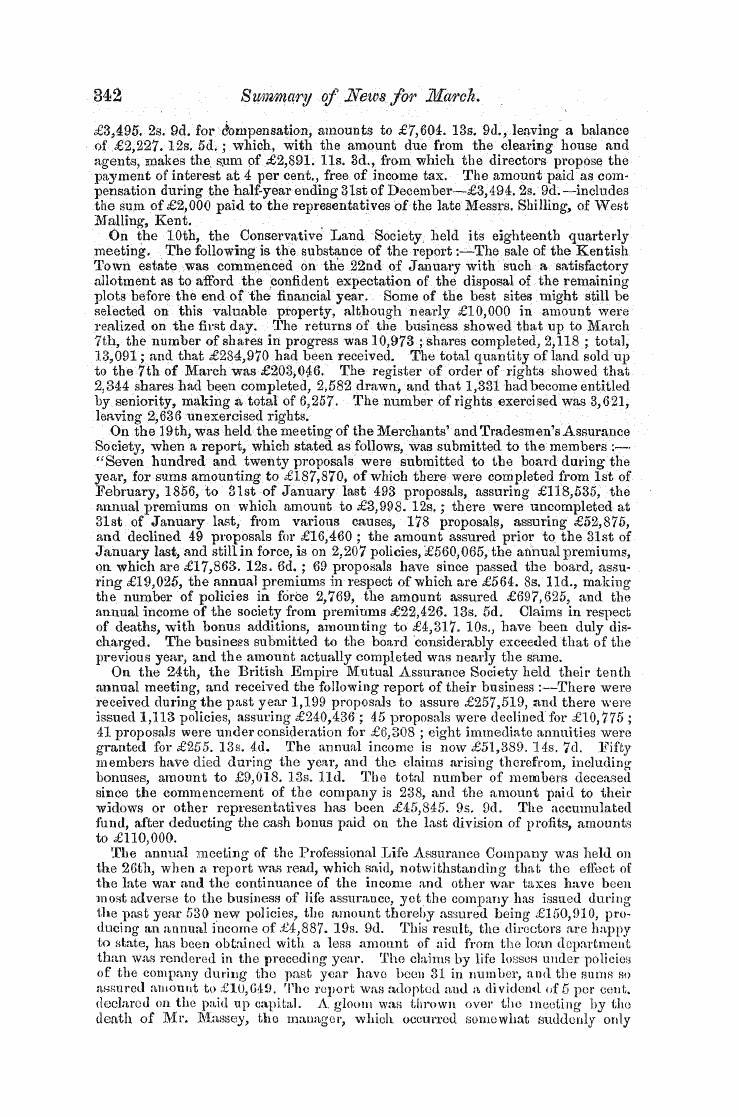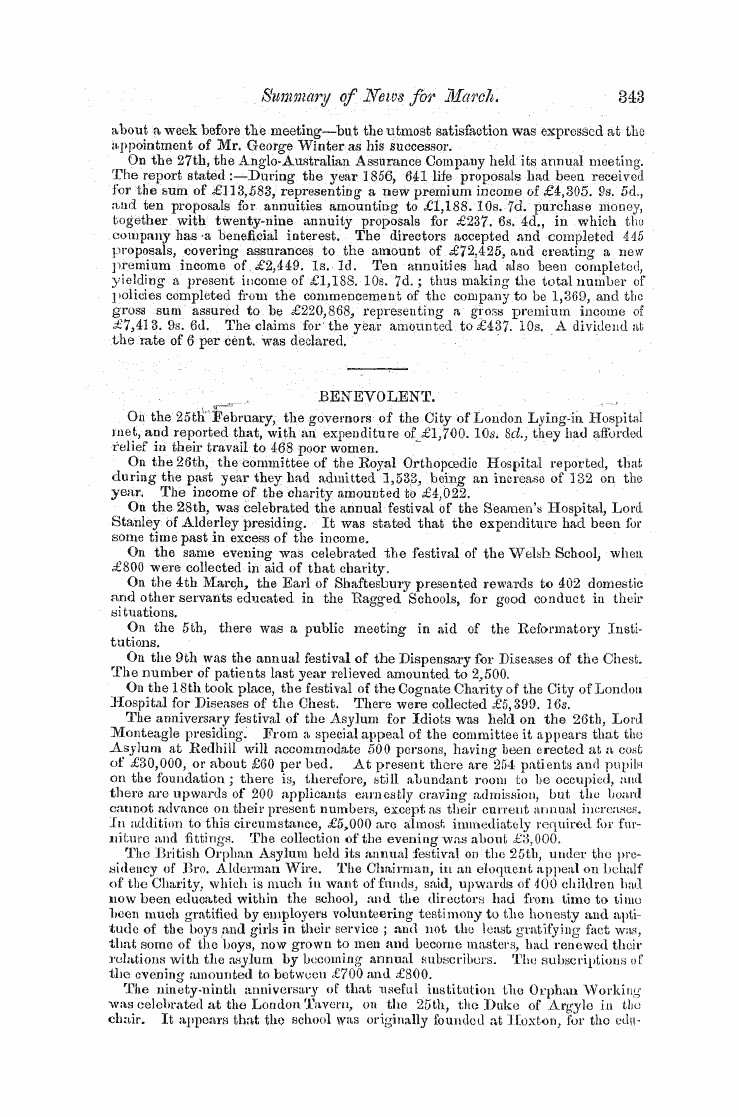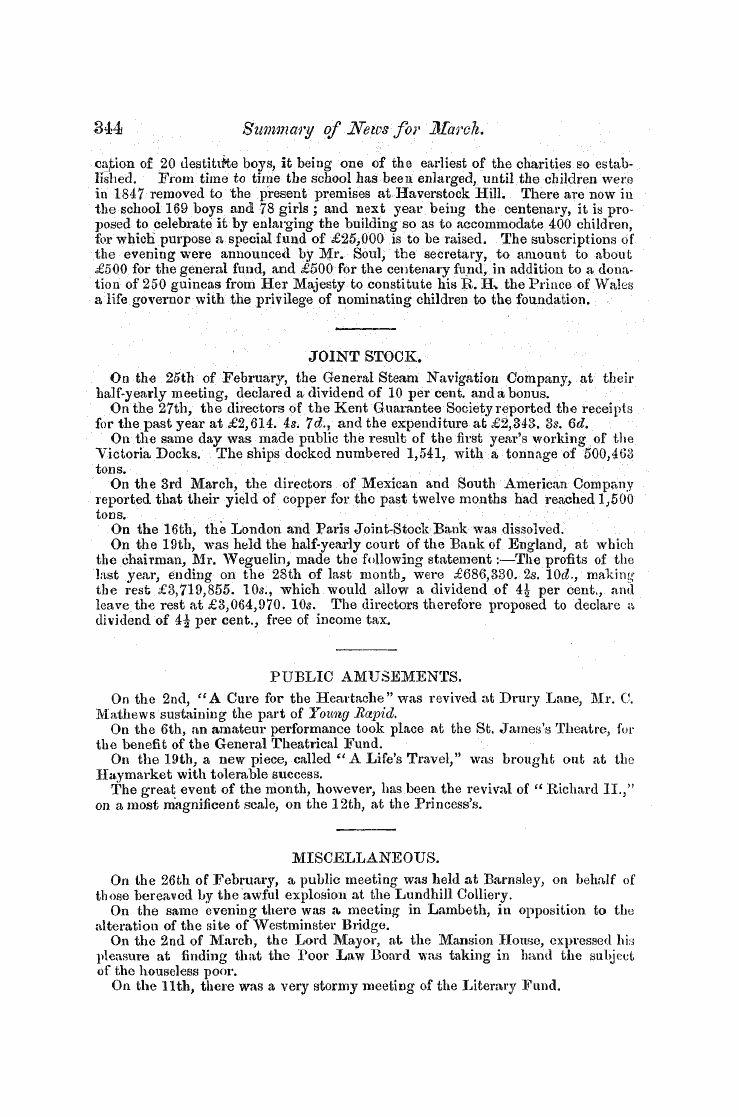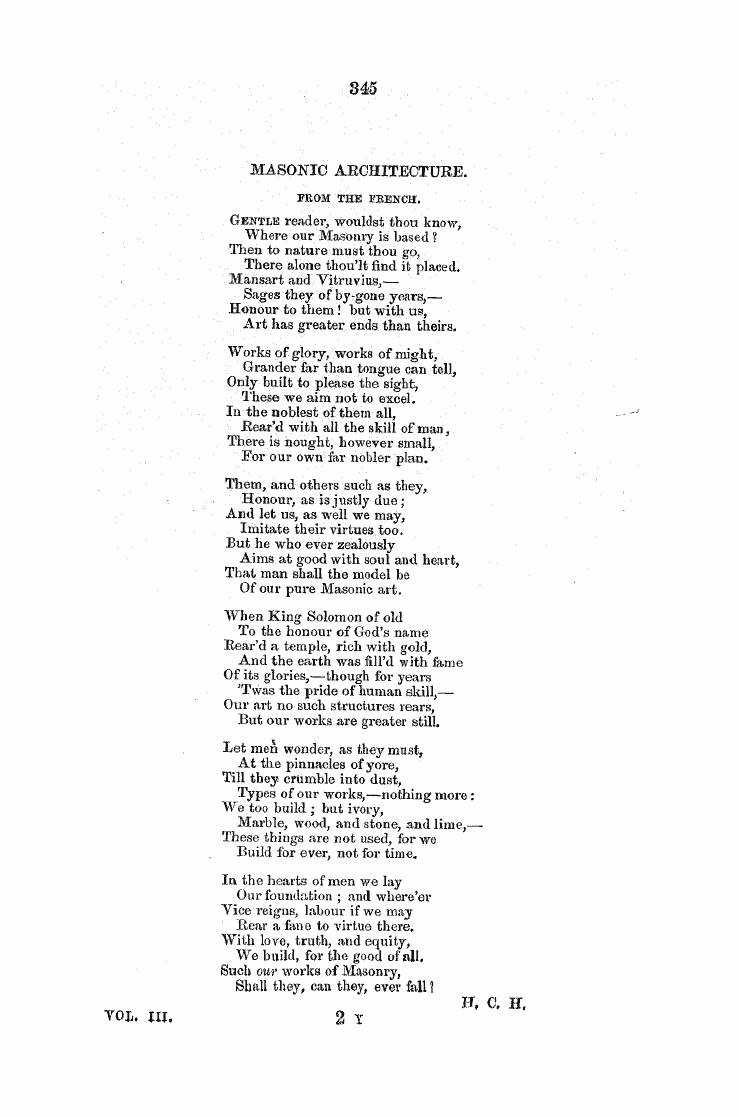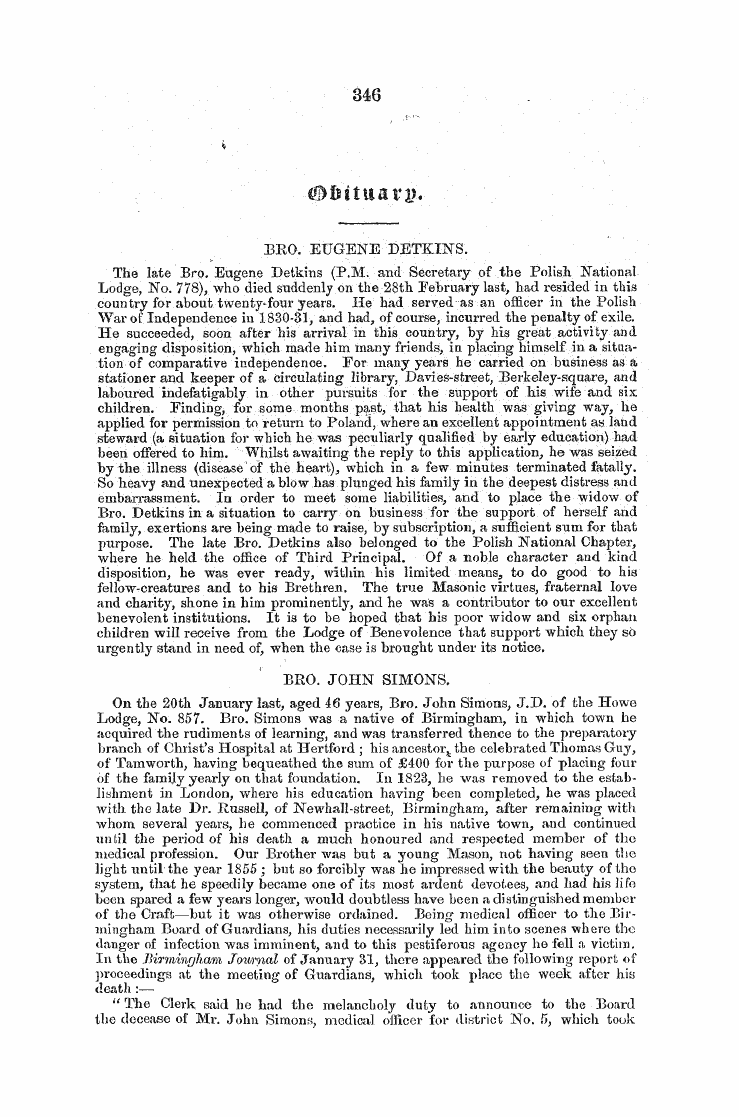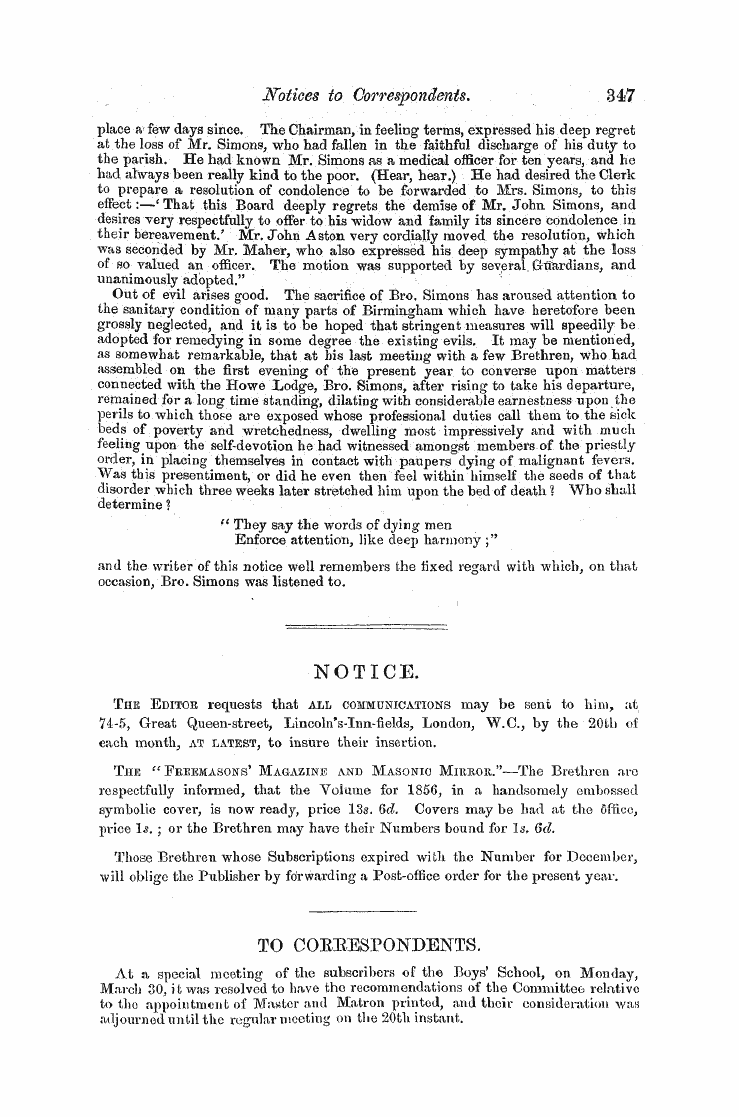-
Articles/Ads
Article KNIGHTS TEMPIAK. ← Page 3 of 6 →
Note: This text has been automatically extracted via Optical Character Recognition (OCR) software.
Knights Tempiak.
3 rd . It would , perhaps , be the means of inducing the Freemasons of the lower degrees of the various rites to unite in the practice of one uniform rite . Masonry is unfortunately , as you are doubtless aware , divided into different Rites ^ or systems , as the religion of the blessed Jesus into various sects ; but , with this
marked difference , however , that , while a Christian can be a member of only one church , a Master Mason of one rite is not only acknowledged as such everywhere , but he may be , and indeed often is , a member of two or more rites . We hold that Ancient Craft Masonry consists of three Degrees and no more \ Entered Apprentice , Fellow Craft , and Master Mason , including the Supreme Order of the Holy Royal Arch . * ,
How did Masonic-rites originate 1 Though the design of Ancient Craft Masonry and its modes of recognition are the same in every country , yet having no central governing power to control the Order and to preserve uniformity in our rituals , as soon as men begun to study scientifically our symbolism , there being no scientific treatises on Masonry , they would naturally , from their peculiar habits of thought , differ concerning the interpretation to be given to certain Emblems and Traditions . During the last century , the obligation not to divulge the secrets of Freemasonry was construed more
strictly than it now is in this enlig htened age . Many things which are now m print , would then only have been communicated within the tyled precincts of the Lodge . The learned Mason of the last century , to instruct his Brethren in his peculiar views concerning the true interpretation of the symbols of the three Degrees , would compose Degrees ; the learned Mason of to-day , for the same purpose , writes books . Several of these Degrees combined together constitute a rite . Everything beyond the Royal Arch , which is undoubtedly the completion of the third Degree , should , therefore , be regarded as extraneous . The Royal
Arch Mason , or he who has found that which was lost , is alone the true Master Mason , for at this stage only , is his education completed . The superior Degrees being explanatory of the three inferior Degrees and the Royal Arch , are merely superstructures reared thereon . A rite , therefore , philosophically considered , is merely the peculiar system of Lectures adopted by the Masons of a country . If this be the true theory of the origin of the numerous Masonic rites now in
existence , let us unite the Templars , who are at the head of each rite , and it Will be an easy matter to unite the Brethren of the inferior Grades , not under one Grand Master ( we doubt whether this would be desirable ) ; but into one rite | : or system , which shall be practised throughout the civilized globe as the true system of Masonry . Then would Brethren from every clime be able to visit our Temples , and to participate in our Mysteries in all the Degrees , without being first formally healed .
Are you willing to assist in this great and glorious undertaking ? If so , you will favour us with your views on this subject . We are not wedded to any particular plan . We merely desire that the great object shall be accomplished in the best possible manner . We shall be happy to receive suggestions from all \ and shall endeavour , in our Report , to give them their due weight .
* For a list of Masonic Degrees and Rites , see " The Historical Landmarks , and other Evidences of Freemasonry , " & c . By Rev . G-. Oliver , D . D . & c . London : Richard Spencer , 314 , High Holborn , Vol . ii . p . 37 d 39 . " Southern and Western Masonic Miscellany , " edited by Albert G . Mackey , M . D . Charleston ; S . C . Walker & Tames , 1851 , vol . ii . pp . 21 , 52 . f " Historical Landmarks , " vol . ii . p . 670 . " Dalcho ' s Ahiinan Rezon ( 1 822 ) Articles of Union , " & c , p . 213 .
: | : This has frequently been attempted in Europe , but has as often failed ; because the advocates of it commenced it in the wrong way . They begun by first endeavouring to unite the Brethren of each rite . They should have begun by endeavouring to unite the Masons of the highest rank—the Templars . Eor a notice of some of these Conventions , see " Rebold Histoire Generale de la l < Yanc-Maconncrie . " Paris : 1857 , p . 207 . VOL . III . 2 T
Note: This text has been automatically extracted via Optical Character Recognition (OCR) software.
Knights Tempiak.
3 rd . It would , perhaps , be the means of inducing the Freemasons of the lower degrees of the various rites to unite in the practice of one uniform rite . Masonry is unfortunately , as you are doubtless aware , divided into different Rites ^ or systems , as the religion of the blessed Jesus into various sects ; but , with this
marked difference , however , that , while a Christian can be a member of only one church , a Master Mason of one rite is not only acknowledged as such everywhere , but he may be , and indeed often is , a member of two or more rites . We hold that Ancient Craft Masonry consists of three Degrees and no more \ Entered Apprentice , Fellow Craft , and Master Mason , including the Supreme Order of the Holy Royal Arch . * ,
How did Masonic-rites originate 1 Though the design of Ancient Craft Masonry and its modes of recognition are the same in every country , yet having no central governing power to control the Order and to preserve uniformity in our rituals , as soon as men begun to study scientifically our symbolism , there being no scientific treatises on Masonry , they would naturally , from their peculiar habits of thought , differ concerning the interpretation to be given to certain Emblems and Traditions . During the last century , the obligation not to divulge the secrets of Freemasonry was construed more
strictly than it now is in this enlig htened age . Many things which are now m print , would then only have been communicated within the tyled precincts of the Lodge . The learned Mason of the last century , to instruct his Brethren in his peculiar views concerning the true interpretation of the symbols of the three Degrees , would compose Degrees ; the learned Mason of to-day , for the same purpose , writes books . Several of these Degrees combined together constitute a rite . Everything beyond the Royal Arch , which is undoubtedly the completion of the third Degree , should , therefore , be regarded as extraneous . The Royal
Arch Mason , or he who has found that which was lost , is alone the true Master Mason , for at this stage only , is his education completed . The superior Degrees being explanatory of the three inferior Degrees and the Royal Arch , are merely superstructures reared thereon . A rite , therefore , philosophically considered , is merely the peculiar system of Lectures adopted by the Masons of a country . If this be the true theory of the origin of the numerous Masonic rites now in
existence , let us unite the Templars , who are at the head of each rite , and it Will be an easy matter to unite the Brethren of the inferior Grades , not under one Grand Master ( we doubt whether this would be desirable ) ; but into one rite | : or system , which shall be practised throughout the civilized globe as the true system of Masonry . Then would Brethren from every clime be able to visit our Temples , and to participate in our Mysteries in all the Degrees , without being first formally healed .
Are you willing to assist in this great and glorious undertaking ? If so , you will favour us with your views on this subject . We are not wedded to any particular plan . We merely desire that the great object shall be accomplished in the best possible manner . We shall be happy to receive suggestions from all \ and shall endeavour , in our Report , to give them their due weight .
* For a list of Masonic Degrees and Rites , see " The Historical Landmarks , and other Evidences of Freemasonry , " & c . By Rev . G-. Oliver , D . D . & c . London : Richard Spencer , 314 , High Holborn , Vol . ii . p . 37 d 39 . " Southern and Western Masonic Miscellany , " edited by Albert G . Mackey , M . D . Charleston ; S . C . Walker & Tames , 1851 , vol . ii . pp . 21 , 52 . f " Historical Landmarks , " vol . ii . p . 670 . " Dalcho ' s Ahiinan Rezon ( 1 822 ) Articles of Union , " & c , p . 213 .
: | : This has frequently been attempted in Europe , but has as often failed ; because the advocates of it commenced it in the wrong way . They begun by first endeavouring to unite the Brethren of each rite . They should have begun by endeavouring to unite the Masons of the highest rank—the Templars . Eor a notice of some of these Conventions , see " Rebold Histoire Generale de la l < Yanc-Maconncrie . " Paris : 1857 , p . 207 . VOL . III . 2 T































































